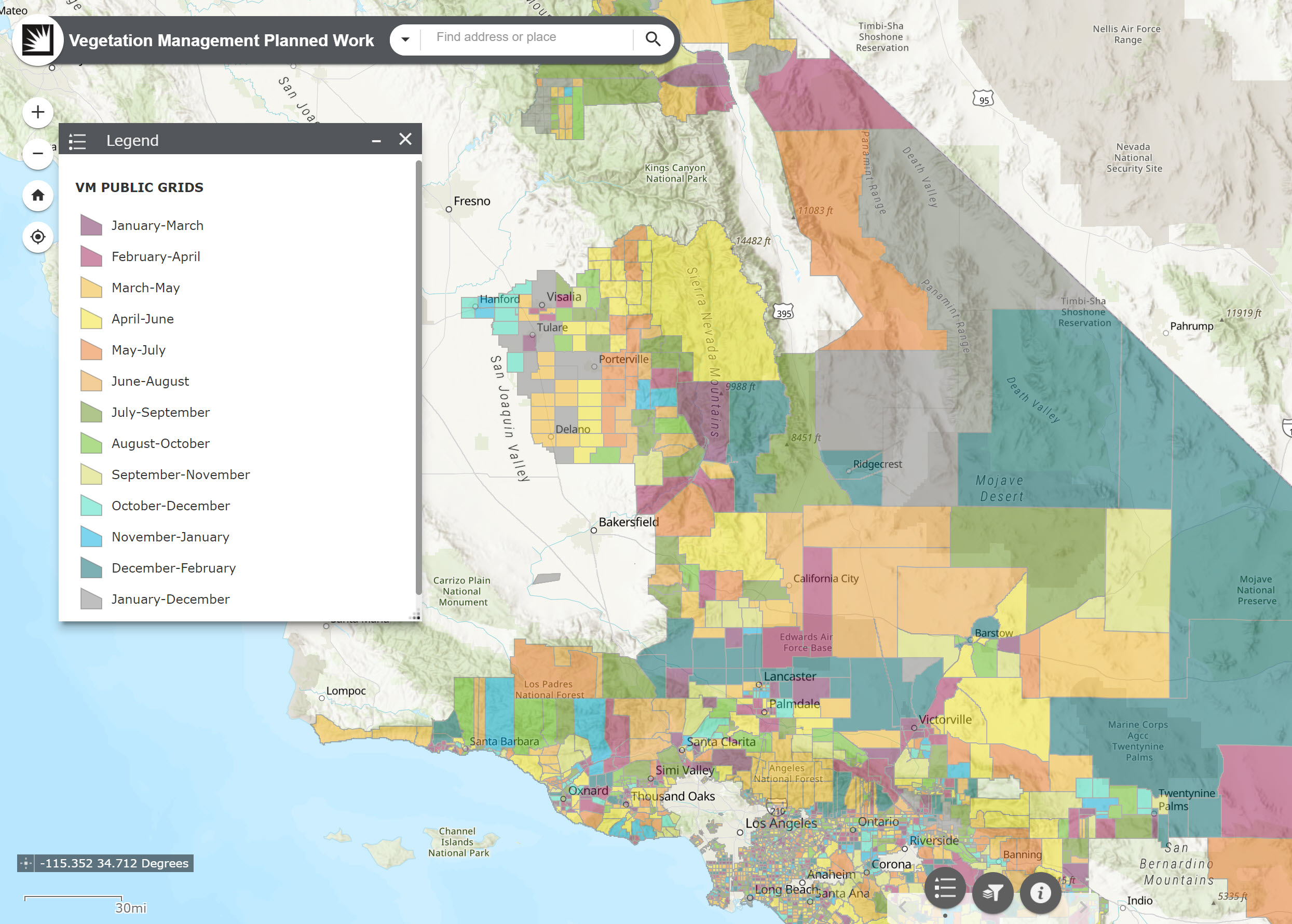Power Lines & Trees
Let’s Keep Trees Away from Power Lines
Trees, shrubs, and other vegetation can cause safety hazards and power outages if they grow into or near power lines. To support safety, we regularly trim or remove trees that are dead, dying, diseased, or growing near or under power lines.
SCE offers a free “make-safe” program. As part of this program, SCE will assess and remove portions of trees to a level that would allow other workers to remove or prune the rest of the tree safely. This includes treating stumps after removing a tree after customer approval has been obtained.
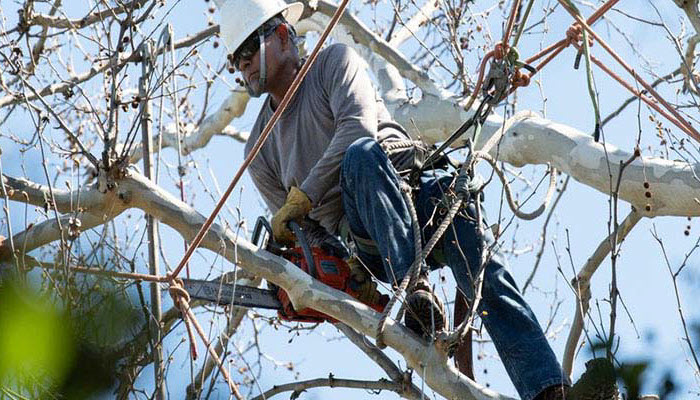
What is Vegetation Management?
Vegetation management is a broad term that describes work we do to minimize the impact trees and vegetation have on providing safe and reliable electric service. It includes hazard tree assessments, tree pruning and removal, brush removal, and weed abatement.
It is a matter of public safety and the reliability of the power grid. State regulations require utilities to trim trees or vegetation which could cause a power outage and spark a fire or be a danger to the public. Enhanced tree trimming is part of the SCE Wildfire Mitigation Plan.
SCE Trims Trees to Keep You Safe
DID YOU KNOW? Every year, SCE inspects 1.6 million trees throughout its 50,000-square-mile area that might pose a hazard to power lines, more than 850,000 of which are in high-fire-risk areas.
SCE trims trees near power lines as a free service to customers to keep the public safe. During trimming, trees will be trimmed to create a minimum 12-foot clearance from a power line.
Please Note: SCE’s responsibility is to protect public safety and the reliability of electric facilities. Therefore, pruning only occurs on the sides of the tree that could encroach on power lines. SCE prunes the tree in accordance with national standards designed to protect tree health. The pruning focuses on power line clearance and does not necessarily encompass the entire tree or consider the resulting aesthetics.
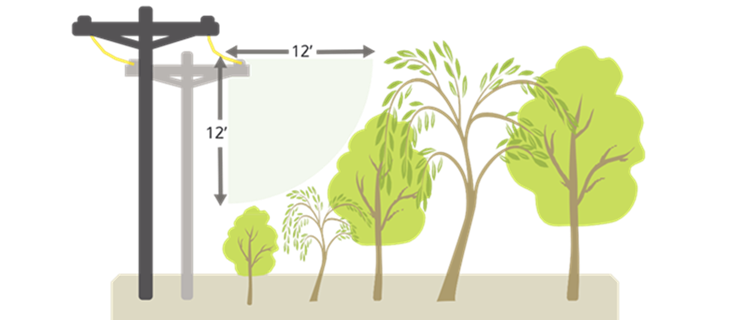
Contact Us About Trees and Vegetation Near Power Lines
If you have any questions about vegetation near SCE power lines, contact SCE Customer Support at 1-800-655-4555.
- Report an object caught in power lines: 1-800-611-1911
- Report an outage: 1-800-611-1911
- Before you dig, Call 811
- Electrical Emergency, Call 911
How Will I Know If My Tree Is Being Trimmed?
SCE conducts annual inspections of trees and vegetation near lines. If a tree is identified for “light pruning,” the customer will be notified via door hanger 30-45 days before maintenance. A second door hanger is provided within 24-48 hours before scheduled maintenance. The door hanger has a phone number the customer can call for more information. Customers with trees that require “heavy pruning” will be contacted in person by SCE to discuss a pruning plan.
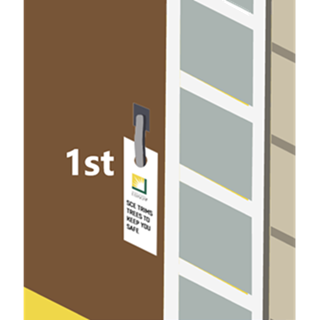
A door hanger will be posted 30-45 days before trimming.
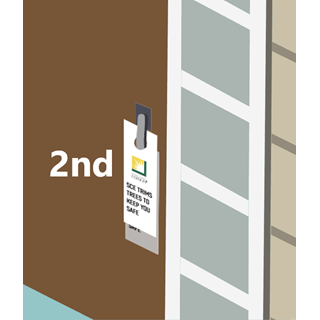
A second door hanger will be posted 24-48 hours before trimming.
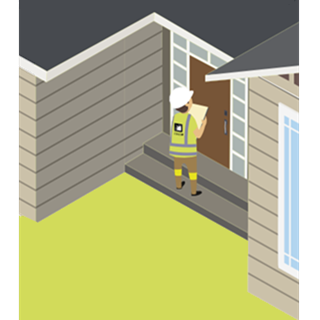
Customers will be contacted in person if heavy pruning or tree removal is required.

Who Can I Call If I Have Questions?
The door hanger will list a contact number to call to discuss the tree-trimming plan for your property.
SCE confers with the property owner to explain the tree removal process and obtain customer permission before removing a tree. Under imminent situations, SCE reserves the right to proceed without permission.
An SCE tree trimming crew will cut down the tree at no charge to the customer. The crew will dispose of the tree or, if the property owner chooses, cut it into firewood.
Brush Removal
Brush removal near SCE poles is required and helps keep communities safe
While trees and vegetation provide many benefits, they can also present major obstacles in meeting Southern California Edison’s responsibility to deliver electricity to customers as safely as possible. If you’re planting a new tree or vegetation, consider where you place it and what it will look like in 10 or 20 years.
A free printable brochure, Right Tree, Right Place, offers SCE customers safety tips and a sampling of utility-friendly tree species recommended for planting.
Properly maintaining trees and vegetation near electrical equipment in high-fire risk areas can help prevent power outages and decrease the risk of sparking a fire.
- Customers will receive a door hanger letting them know the brush is in their area near SCE equipment.
- SCE crews will clear the brush using hand tools and treat the area to prevent regrowth. The treatment is expected to last 12 months.
- All tree trimming and vegetation management are done as part of SCE’s vegetation maintenance work at no additional cost to the customer.
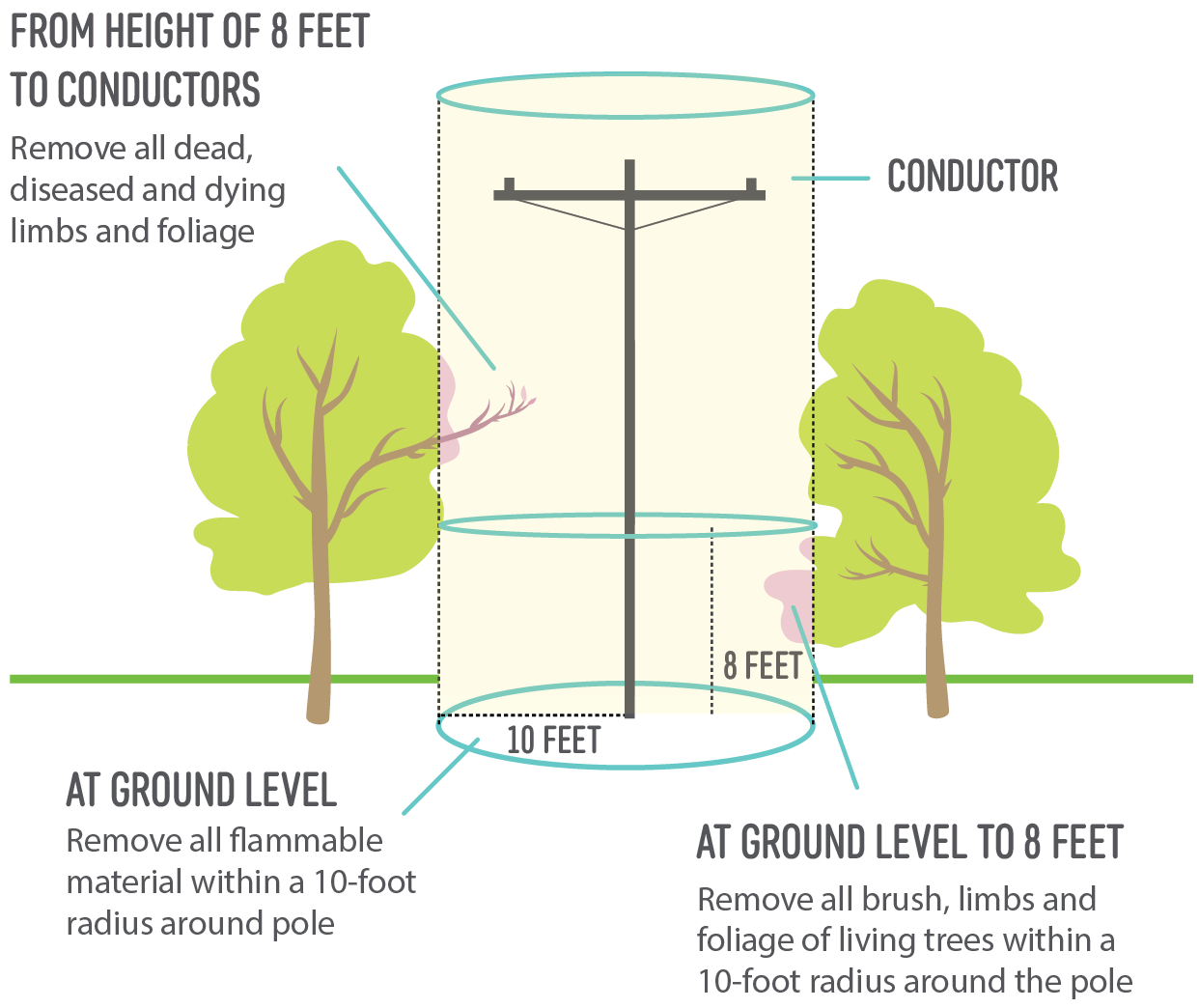
Enhancing Grid Reliability
Transmission Vegetation Management and Integrated Vegetation Management
A reliable electricity transmission system is crucial for an uninterrupted power supply, but vegetation growth near power lines can lead to outages and risks. Transmission Vegetation Management and Integrated Vegetation Management are vital strategies for addressing these challenges.
Transmission Vegetation Management involves systematic inspection, pruning, and vegetation removal near power lines. A key consideration is the requirement for greater clearances from vegetation to conductors. This is especially important for transmission lines, which carry higher voltages than distribution lines, resulting in a higher potential for electrical flashover risk. Flashovers occur when electricity jumps from the conductor to nearby vegetation, causing outages and potential fires. To prevent these hazards, Transmission Vegetation Management ensures a sufficient distance between vegetation and transmission lines.
An outage in a transmission line can have far-reaching consequences. These lines are responsible for carrying electricity across long distances, often connecting power plants to distant communities. When an outage occurs, large areas can be left without electricity, affecting homes, businesses, hospitals, and critical infrastructure. The economic and social impact of such outages can be significant, highlighting the importance of robust Transmission Vegetation Management practices.
To ensure effective Transmission Vegetation Management, various regulatory bodies like the North American Electric Reliability Corporation (NERC), the Federal Energy Regulatory Commission (FERC), and the California Public Utilities Commission (CPUC) have established guidelines and regulations. These agencies work to standardize Transmission Vegetation Management protocols, emphasizing the importance of regular inspections, maintenance, and adherence to safety protocols. By complying with these regulations, utilities can enhance grid reliability and protect both the power infrastructure and the environment.
Integrated Vegetation Management (IVM) also plays a crucial role by integrating ecological considerations into vegetation management. This approach seeks to balance power system safety and environmental preservation. By selecting compatible vegetation species and adopting eco-friendly controls, IVM minimizes the impact of vegetation management on the ecosystem while ensuring reliable power transmission.
Frequently Asked Questions
SCE has certified arborists throughout its vegetation management operation. All of SCE’s vegetation management senior specialists are certified arborists, and the contractors hired by SCE have arborists among their crew. In addition to their arborist certification, they complete additional training to work around power lines.
Only specially trained tree trimmers can work near power lines. Homeowners who hire their own tree trimmers to prune or remove trees near wires must first notify SCE. This includes work on any tree within 10 feet of SCE lines or trees that could come in contact with wires or equipment if they fall.
Regulations (CPUC GO 95, Rule 35, and CA PRC 4292 and 4293) require utilities to trim trees or vegetation so they don’t grow into or fall into high-voltage power lines, which could not only cause a power outage but could spark a fire or be a danger to the public.


